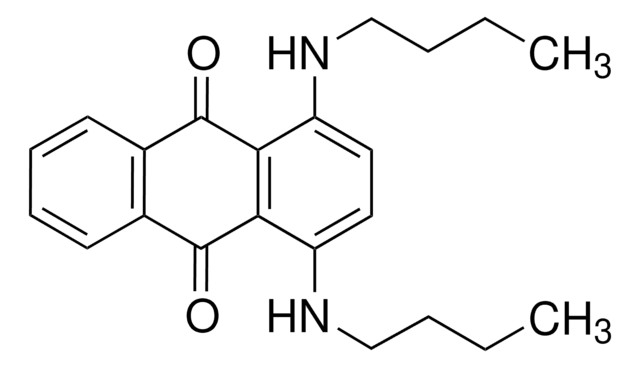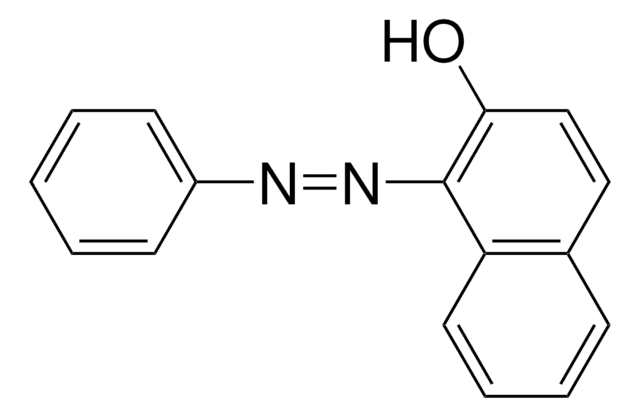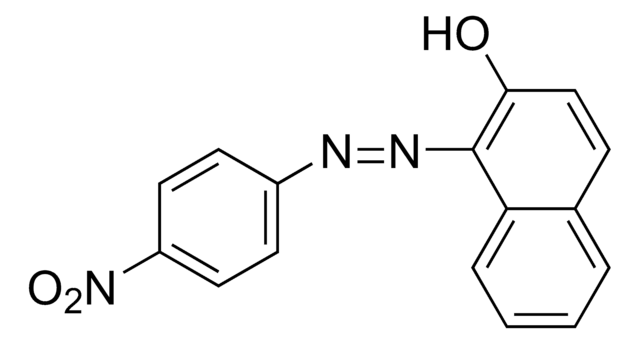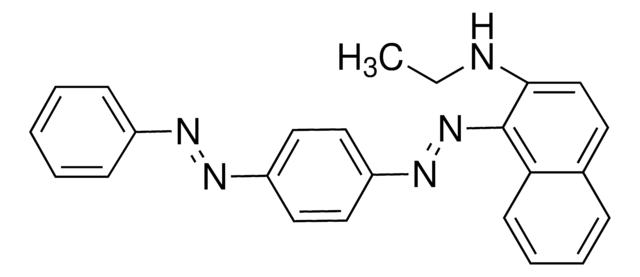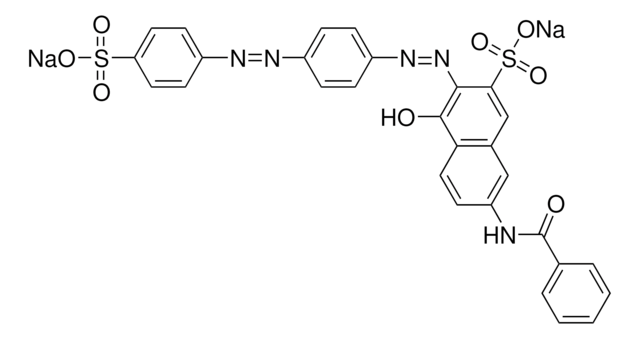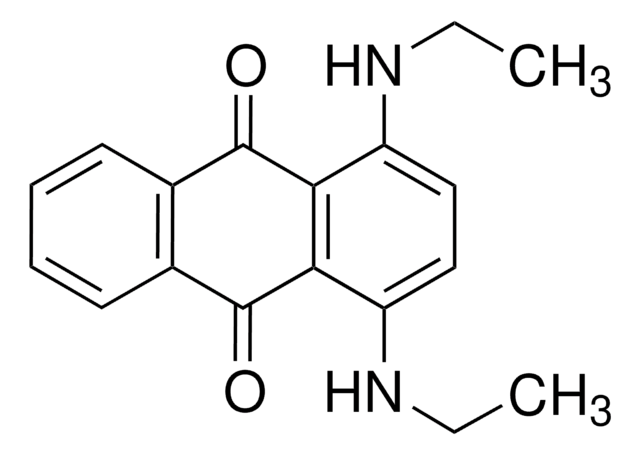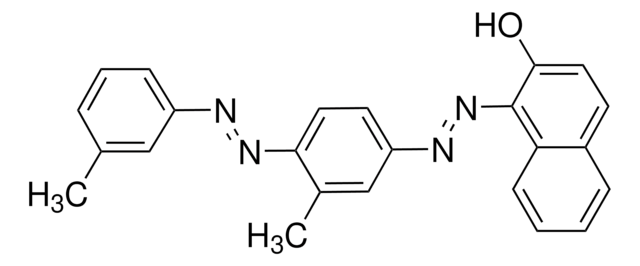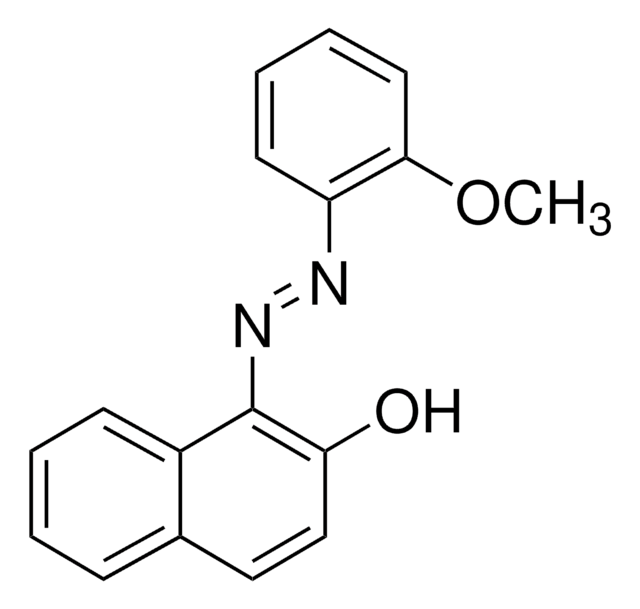推荐产品
表单
powder
质量水平
组成
Dye content, 85%
mp
143-146 °C (lit.)
溶解性
chloroform: 1 mg/mL, clear, orange to red
λmax
388 nm
应用
diagnostic assay manufacturing
hematology
histology
储存温度
room temp
SMILES字符串
Oc1ccc(\N=N\c2ccccc2)c(O)c1
InChI
1S/C12H10N2O2/c15-10-6-7-11(12(16)8-10)14-13-9-4-2-1-3-5-9/h1-8,15-16H/b14-13+
InChI key
BPTKLSBRRJFNHJ-BUHFOSPRSA-N
正在寻找类似产品? 访问 产品对比指南
一般描述
苏丹橙G属于偶氮染料,是一种合成有机着色剂。偶氮染料的成员都包含发色偶氮基团(-N-N-)。
应用
苏丹橙G已被用于研究其酶促生物转化,并已被用作液相色谱-质谱法的标准品。
警示用语:
Warning
危险声明
危险分类
Eye Irrit. 2 - Skin Irrit. 2 - STOT SE 3
靶器官
Respiratory system
储存分类代码
11 - Combustible Solids
WGK
WGK 3
闪点(°F)
Not applicable
闪点(°C)
Not applicable
个人防护装备
dust mask type N95 (US), Eyeshields, Gloves
Development of a method for the analysis of seven banned azo-dyes in chilli and hot chilli food samples by pressurised liquid extraction and liquid chromatography with electrospray ionization-tandem mass spectrometry
Pardo O
Talanta, 78, 178-186 (2009)
Enzymatic biotransformation of the azo dye Sudan Orange G with bacterial CotA-laccase
Pereira L
Journal of Biotechnology, 139, 68-77 (2009)
Determination of Banned Dyes in Spices by Liquid
Chromatography?Mass Spectrometry
Chromatography?Mass Spectrometry
Botek P
Czech Journal of Food Sciences, 25, 17-24 (2007)
Daniel Kessler et al.
The Journal of neuroscience : the official journal of the Society for Neuroscience, 34(50), 16555-16566 (2014-12-17)
Previous neuroimaging investigations in attention-deficit/hyperactivity disorder (ADHD) have separately identified distributed structural and functional deficits, but interconnections between these deficits have not been explored. To unite these modalities in a common model, we used joint independent component analysis, a multivariate
Ze Wang et al.
Drug and alcohol dependence, 152, 102-108 (2015-05-11)
The functional interconnections of the addicted brain may differ from the non-addicted population in important ways, but prioranalytic approaches were usually limited to the study of connections between a few number of selected brain regions. Recent approaches enable examination of
我们的科学家团队拥有各种研究领域经验,包括生命科学、材料科学、化学合成、色谱、分析及许多其他领域.
联系技术服务部门